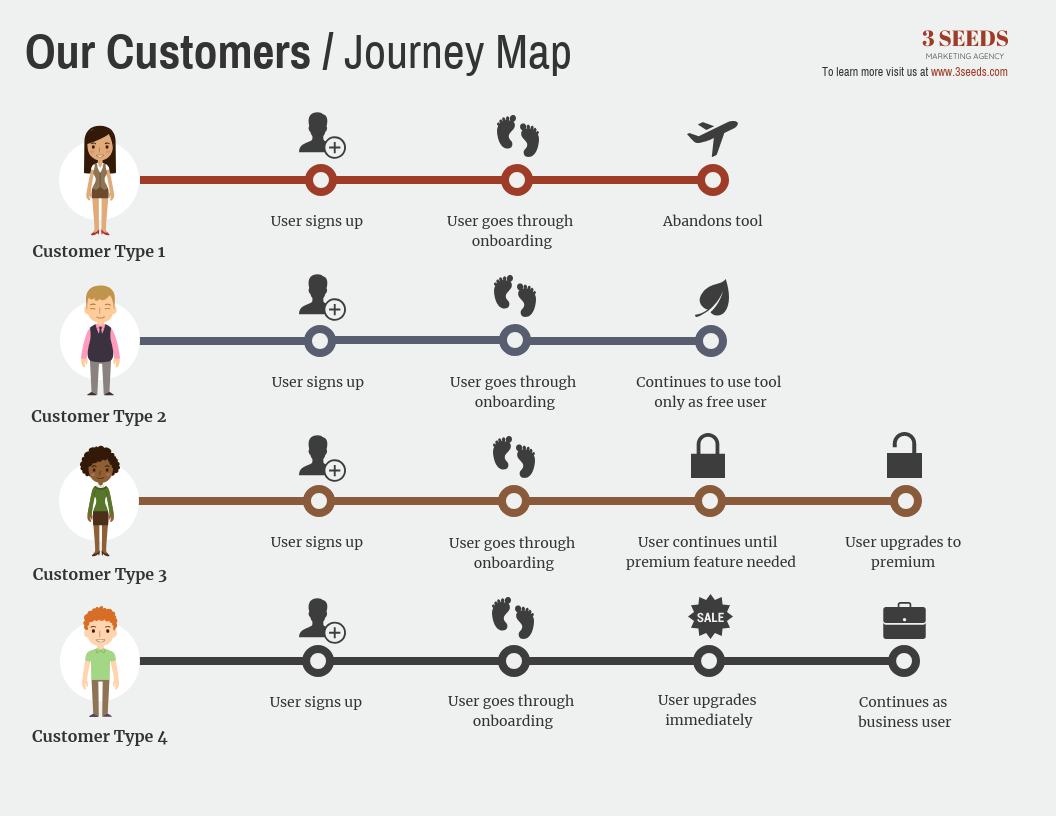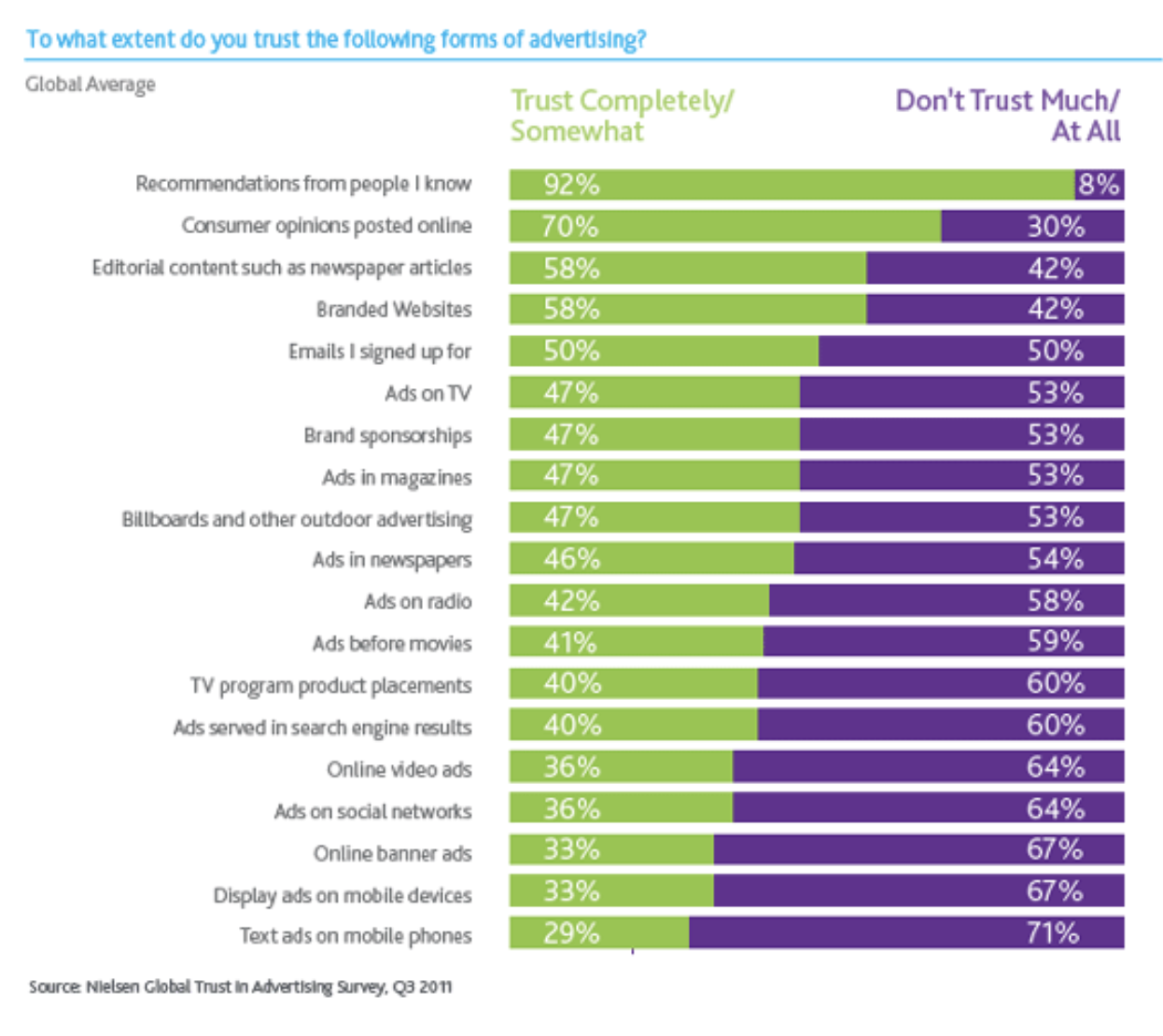Businesses know that attracting new customers is important. But so is giving them a great experience that keeps them coming back. This is what customer engagement is all about.
In our guide, we share why customer engagement is important. We also outline a strategy that makes building user relationships easier for companies of all sizes.
What is customer engagement?
Customer engagement is the process of creating a long-lasting relationship with a consumer that extends beyond one sale.
This kind of interaction takes place on multiple channels, not just at the point of sale. For example, companies can engage with customers through the following platforms:
- Brand website
- Blogs
- Social media posts
- Email newsletters
For this process to be a success, it’s important to track the customer journey. The example below can easily be designed using a timeline creator.

Source: Venngage
Creating a customer journey ensures that brands are available at the necessary touchpoints where a customer may need to be contacted.
It also helps brands understand who their target audience is and what they need to do to extend one sale into multiple opportunities.
What is the role of customer engagement?
Customer loyalty is one of the most impactful revenue drivers for businesses, according to Shopify.

A lot of work goes into attracting a single customer and taking them through the marketing and sales funnel, illustrated below.
 Expending that much effort for every sale will exhaust marketers.
Expending that much effort for every sale will exhaust marketers.
Businesses that engage with users at important touchpoints of a customer lifecycle close more sales. That is why companies need to look into customer engagement solutions.
Additionally, building a relationship with customers boosts brand awareness and improves a brand’s online reputation.
So, how can brands create customer loyalty and encourage brand advocacy?
What is a Customer Engagement Strategy?
Digital customer engagement can only be successful if there is a well-planned strategy to back it up. Here are the essential elements of a customer engagement plan.
1. Data collection
How do your customers want to interact with your brand? Which platforms do they prefer? How frequently do they need your product or associated services?
These questions can all be answered through data collection and analysis.
Now is the time to make data literacy a priority for marketing and customer service teams. As explained in this graphic, data literacy means analyzing, communicating, and managing data.

Source: Venngage
Data helps brands find out what their customers want from them, which platforms they use, what their purchasing habits are, and what market segments they fall into.
There are numerous data collection and analysis tools that brands can use to understand their audience and improve customer engagement.
2. Valuable content
Knowing what consumers want is one step in the right direction. Brands also need to create content that adds value to their audience.
This is where brands can build long-lasting emotional connections with their customers. After all, content is influenced by the needs of the customers.
For example, brands can educate users by creating content around relevant real-world topics, like this one about terms related to diversity.

Source: Venngage
Videos or GIFs of product walkthroughs can engage customers and improve the product adoption process.
Don’t create content that focuses on what your business does best. Focus on what your customers can learn from your brand and how you can improve their lives.
3. Brand authenticity
Most importantly, brands must be authentic in the content they create and how they interact with customers.
The online world has made users wary of the hard-sell approach. They want brands to treat them like human beings. But they also need brands to appear human.
Putting a face to the business, like Salesforce and Accenture did in this Twitter video, builds a personal connection between a business and its customers.
Research shows that companies perform 2.5x better when they prioritize sustainability.
Why? Because customers want it and employees rally around it.
Join us and @Accenture — put sustainability first: https://t.co/z2e3A2QAQh#LeadingThroughChange pic.twitter.com/N1AoSMYjsT
— Salesforce (@salesforce) March 18, 2021
Taking a stand in philanthropic efforts or against societal issues makes brands look more authentic. Customers want to connect with companies that have the same values as them.
Examine your mission statement and core values. Focus on highlighting them in your content and customer relations.
4. Customer support
Customer engagement and customer support go hand-in-hand. When a new customer has a query or issue, they shouldn’t be left to figure it out on their own.
The service team should be available to answer any questions or help the customer through a process. This will keep the customer engaged and give them a positive brand experience.
If it isn’t possible to have a support team on-hand—especially for brands with international audiences, implement a website chat widget so customers always get a response.
5. Testimonials
Customers trust the word of fellow users more than advertising or editorial content, as this graph indicates.

The best way to show customers why your brand is trustworthy is by showcasing testimonials. These can be shared on social media or added to your homepage.
Make the process easier for users by reducing their labor. Create testimonial templates for your customers to fill in. This also ensures consistency in the responses you receive.
7 Essential Customer Engagement Metrics
A strategy is only as good as the metrics it helps a company achieve. There are numerous metrics, like the below, that brands can use to measure their relationship with customers.

Not all brands examine the same data, but here are the seven most common customer engagement metrics that companies can use to improve their user experiences:
- Active users – this is the number of users who consistently engage with your brand
- Bounce rates – the percentage of users who leave your website or webpage
- Conversion rates – the percentage of customers who complete the intended goal of a campaign
- Net promoter score – this customer loyalty metric examines the likelihood that a customer will recommend your brand
- Time on site – how much time users spend on your website
- Repeat purchases – how many additional purchases a customer makes after the first sale
- Subscribers – the number of customers who subscribe to your newsletter or subscription boxes and want regular updates from your brand
Brands may choose to focus on all or a few of these metrics. Whatever their decision, it is imperative that some analysis is done to ensure that engagement keeps improving.
Conclusion: Make Customer Engagement a Data-Driven Exercise
Building a long-lasting relationship with customers is crucial in a crowded marketplace. It’s the best way to retain customers and attract new ones.
In our guide, we have shared what customer engagement is and why it is important for brands. We have also outlined a strategy and key metrics to examine.
Brands can now determine how they want to build their customer relationships and which areas require improvement so they can achieve their goals.



